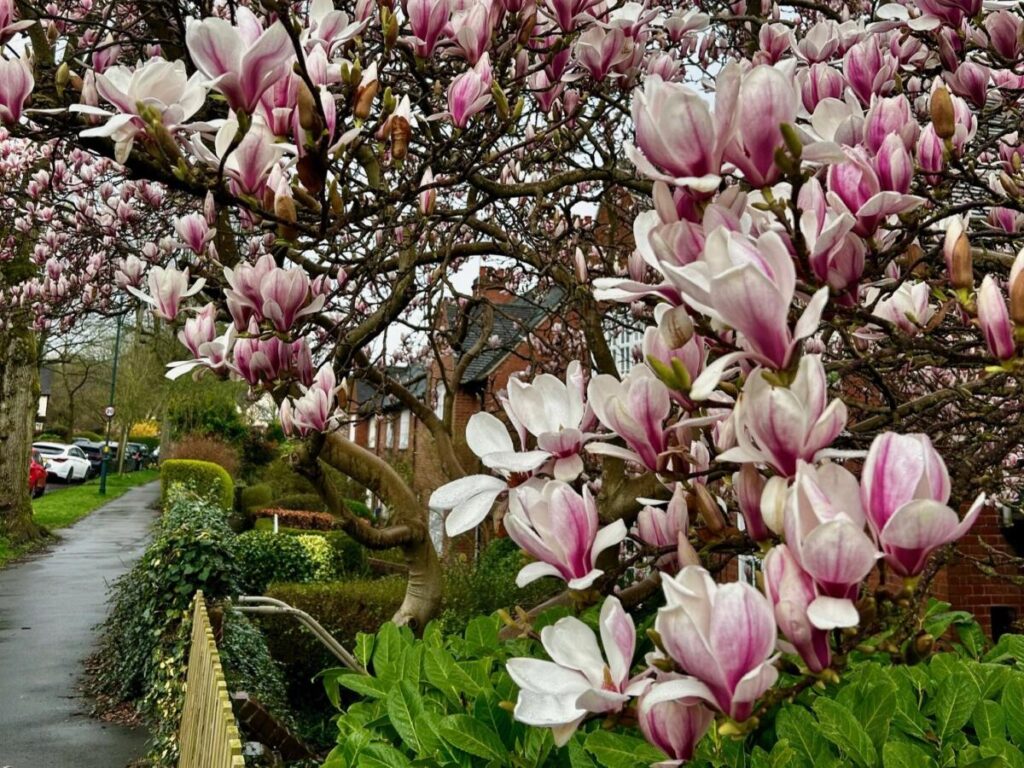
Walking is considered to be one of the easiest ways to stay fit, and National Walking Day, which falls on the first Wednesday in April, is the ideal excuse to explore local paths. But stretching your legs in Harborne could improve your wellbeing in ways you might not expect.
The health benefits of being able to see green spaces through a window have been known since the 1980s when a study revealed that being given visual access to nature aided hospital patient’s recovery times (1).
One of the first things you notice when you enter the Moor Pool Estate is that there seem to be more trees at a closer density than other parts of the city – and its leafy streets are undoubtedly part of the area’s appeal. Indeed, back when John Sutton Nettlefold established Moor Pool as a garden suburb, trees were used to encourage a semi-rural feel (2). Add to this a diverse range of species – oak, sycamore, horse chestnut, lime and birch are common across the Estate – and there is suddenly the potential for a miniature forest to emerge in an urban environment.
Even small-scale forests can create ecosystems and promote biodiversity, and if we take a short walk under Moor Pool’s mature trees (which are estimated to number around 200) our mental health can also benefit. Researchers have found that walking for just 15 minutes in a green area can benefit mood and boost concentration (3). Even the allotments give a sense of extra green space.
Our non-visual sensory pathways are also stimulated and we gain a heightened awareness of natural sounds such as birdsong, which is associated with an improvement in mental wellbeing that can last up to eight hours (4). Sadly, house sparrows have vanished in their millions since the 1970s and are now on the UK Red List of Birds of Conservation Concern, but you don’t have to walk far to experience the chattering of these little birds which are thankfully abundant in the many hedgerows across the Estate.
Over 50 per cent of the world’s population lives in cities and the World Health Organization estimates that in 2019 air pollution was responsible for 4.2 million premature deaths globally (5). Trees in urban spaces are critically important for protecting us from pollutants such as carbon dioxide, nitrogen dioxide and sulphur dioxide, and they also go some way towards mitigating the ‘heat island effect’ which occurs when heat created by human activity becomes trapped in the narrow streets and concrete structures of a built-up environment. It is not surprising that the shade offered by trees provides sanctuary for both humans and wildlife during a heatwave.
Now back to our walk. If we head to Ravenhurst Road or Park Edge we can take in a view of the Moor Pool, and you might be interested to know that researchers in Switzerland found that urban blue spaces such as ponds had a significant positive impact on people’s wellbeing, with interviewees stating that they saw them as important in bringing about a connection to nature (6). The Moor Pool is home to various birds, insects and plant life, and participants in the study said biodiversity was the most important contribution to people made by urban ponds.
National Walking Day promotes the importance of incorporating physical activity into our daily lives; with all this greenery around us, why not join in the celebration by taking a stroll in the nature on our doorstep? Follow our self-guided trail or just see where your feet take you!
Sources:
Helen Eden, March 2025
Moor Pool Hall
37 The Circle, Harborne,
Birmingham, B17 9DY
Registered Charity Number: 1148252
© 2025 All rights reserved | Website by Citrus Frog